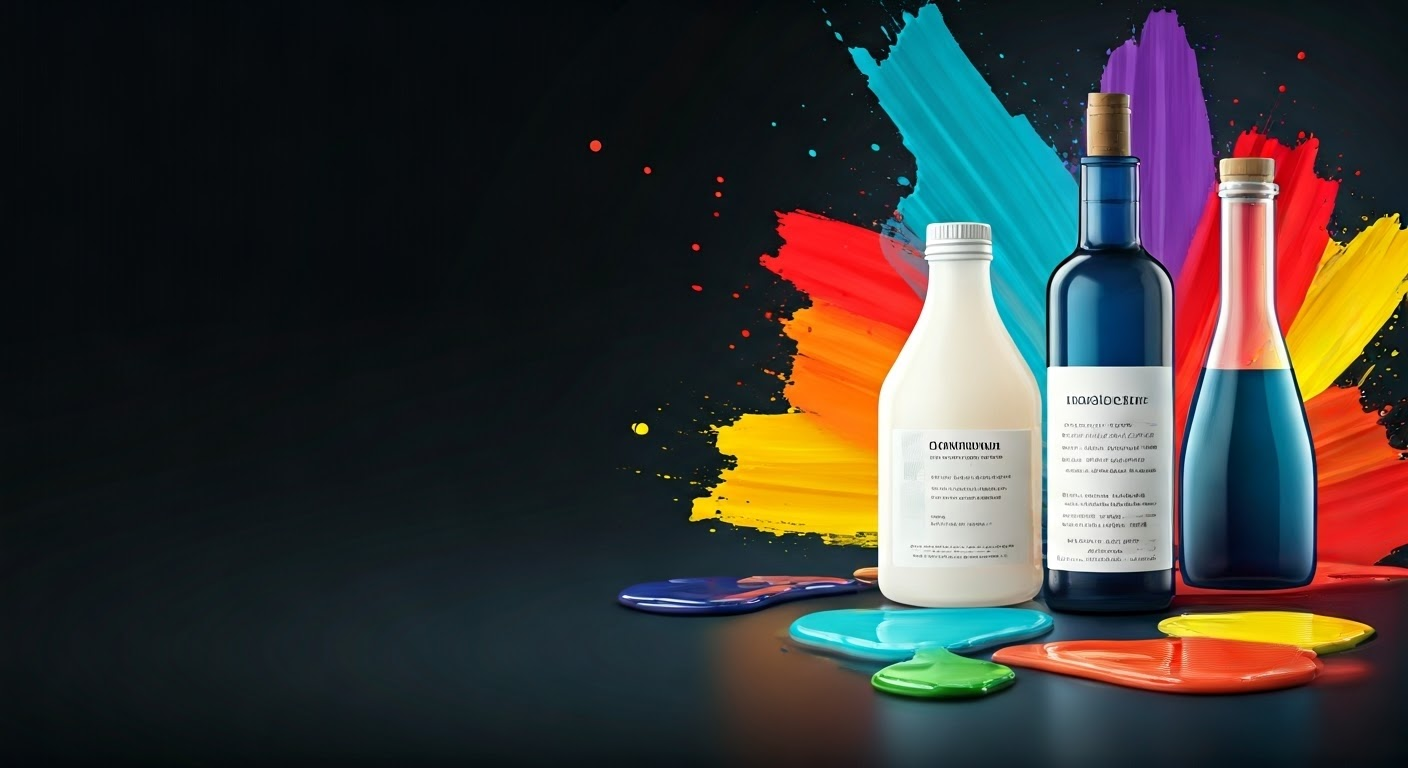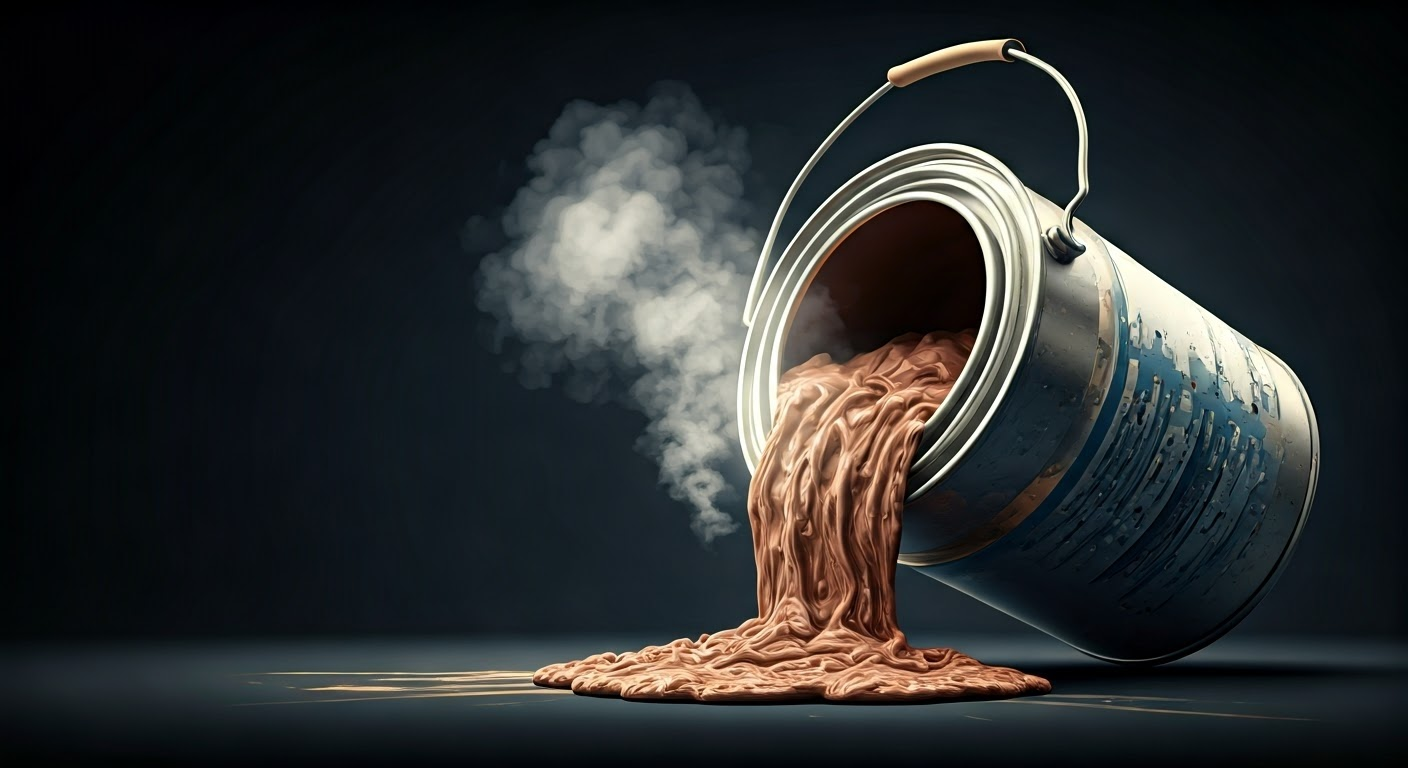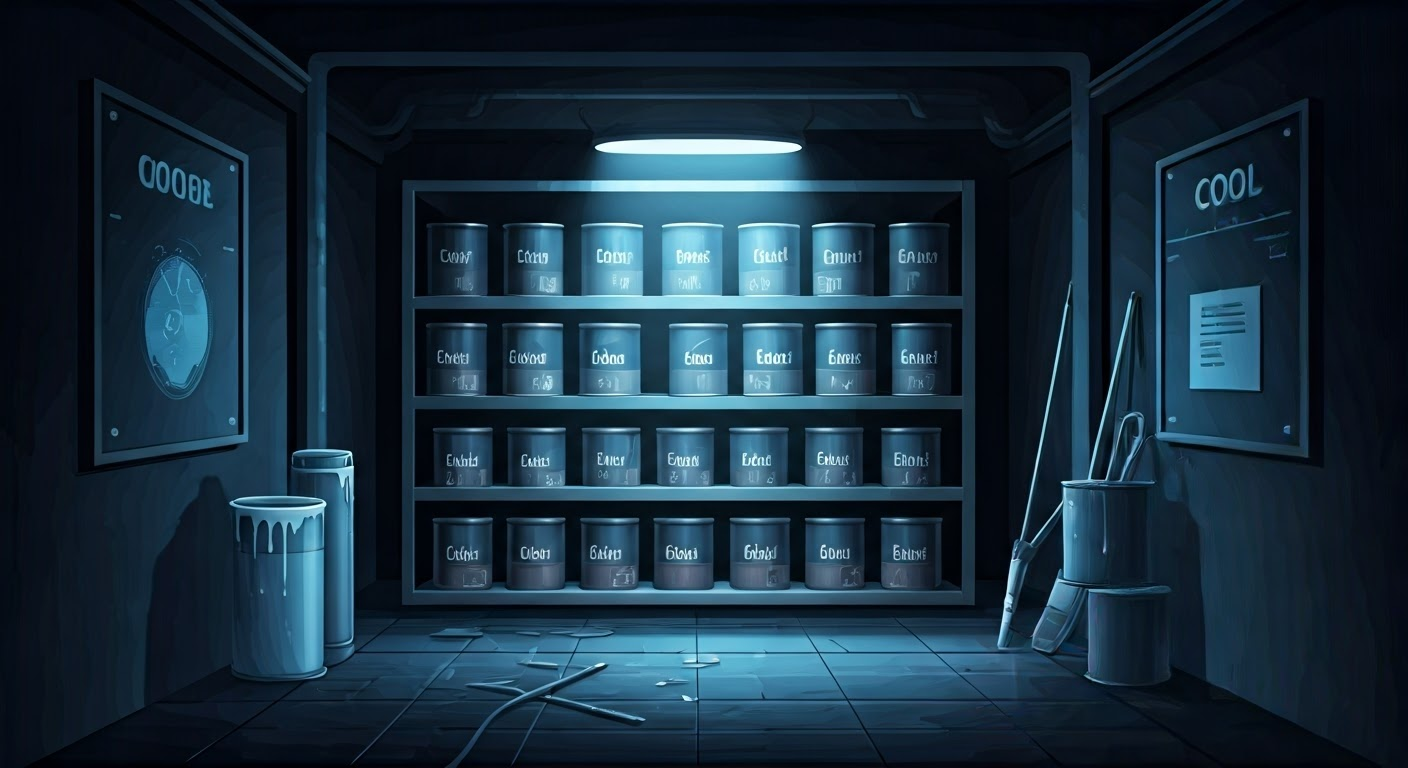
Saving old paint for small fixes or future projects is a smart way to cut down on waste. However, how long paint lasts can vary.
Many people ask, “How long does paint last?”
The answer can be tricky. Let’s look at how long paint’s shelf life really is, how to tell if paint has gone bad, and how to store it to help it last longer.
Understanding Paint Composition and Shelf Life

The shelf life of your paint depends a lot on its chemical makeup. Different types of paint have different aging processes. Knowing their specific characteristics can help you decide how to store and use them. For example, latex paint is a common option but usually has a shorter shelf life than oil-based paint.
How paint is packaged is important for how long it lasts. An unopened can of paint is sealed from air and moisture. These two things can damage the paint over time. However, once you open the can, the shelf life decreases.
The Basics of Paint Components
Paint, no matter the type of paint, has four main parts: pigments, binders, solvents, and additives. Pigments give color. Binders hold the pigment on the surface. Solvents keep the paint in liquid form. Additives add features like mold resistance or quicker drying time.
Latex paint is a popular choice for interior walls and ceilings. It uses water as a solvent. This makes it easy to clean and gives it a low odor. Acrylic paint is another well-liked option. It is a type of latex paint, but it provides a tougher finish. This makes it good for both inside and outside use.
On the downside, latex and acrylic paints can be affected by changes in temperature. When it gets cold, the water can freeze, causing it to expand and contract. This can make the paint separate and reduce its effectiveness.
How Long Can Paint Last When Unopened?
An unopened can of paint can last a long time. Its airtight seal keeps air and moisture out. The exact time it lasts depends on the type of paint. Most unopened cans of paint can be good for several years and sometimes even up to ten years if they are stored well.
The length of time paint lasts depends on a few things. These include the quality of the paint, how it was made, and how well the can is sealed. High-quality paints use better ingredients and packaging, which helps them last longer.
So, if you find an unopened can of paint in your garage or storage, it might still be good to use. Just be sure to check for any damage, rust, or bulging. These signs could mean the paint has spoiled.
Identifying the Signs of Expired Paint

An unopened can of paint can last for many years. But once you open it, the paint will not last as long. If you have old paint cans, it is important to find out if the paint is still good or if it has gone bad.
Knowing how to spot expired paint can help you avoid problems when painting. It will also help you get a smooth finish for your next project.
Unpleasant Odor: The First Indicator
One clear sign that paint is old is a bad smell that hits you when you open the can. New paint usually has a strong chemical scent, but old paint smells rancid and sour. It’s important to know the difference.
The sour smell often indicates that bacteria have grown in the paint. This can happen if the can is not sealed well after opening. You might also see mold, which can look like black or green spots on the paint surface or around the can’s edge.
If you notice these signs, it’s best to throw the paint away. Trying to save it can put you at risk from harmful bacteria or mold spores. Plus, it won’t lead to a good result for your paint job.
Texture Changes: From Smooth to Chunky or Separated
Another way to tell if your old paint is too old is by looking at its texture. Fresh paint usually feels smooth and has a consistent thickness. As paint gets older, the ingredients can break apart, making it feel chunky or lumpy.
This breakdown happens because the binder, which keeps the color particles together, starts to fail. Without a good binder, the color falls to the bottom while the liquid and other additives split apart. This makes the paint look bad and unusable.
You might try to mix chunky paint back to look smooth, but that’s usually not successful. The different parts often won’t mix again properly. This can lead to uneven coverage and a messy finish.
Color Alteration: When Paint Loses Its Original Hue
Paint can change color as time goes by. You may not see this change when the paint is still in the can, but it shows up once you apply it. The bright color you once loved might look dull, faded, or a bit different from what you wanted.
This color change happens because the pigments, which give paint its color, break down when the paint is exposed to air and light. A small difference in color between new paint and older paint is okay, but a big change means the paint might not be good to use anymore.
Using paint that has changed color can lead to an unwanted finish. It can also result in differences in color if you try to touch up places you already painted with newer paint.
The Lifespan of Different Types of Paint
Just like the food in your kitchen has different expiry dates, different types of paint also last for various lengths of time. It is important to know these differences so you can store and use them correctly.
Water-based latex and acrylic paints, durable oil-based paints, and green chalk and milk paints each have their own shelf life.
Longevity of Water-Based vs. Oil-Based Paints
Among the many types of paint, water-based and oil-based paints are the most common. Water-based paint, which includes latex and acrylic paints, usually lasts from two to ten years when unopened. In contrast, oil-based paint can last up to fifteen years when unopened.
The main difference between them is in their makeup. The water in water-based paints can allow bacteria to grow, making them break down faster. They can be affected by changes in temperature too. On the other hand, oil-based paints use oil-based solvents. This makes them more stable and less likely to have problems.
It is also important to remember that whether you have water-based paint or oil-based paint, proper storage is crucial to keep them lasting longer.
Specialty Paints: Chalk, Milk, and Acrylic
Beyond normal latex and oil-based paints, there is a growing market for special paints. These paints offer unique looks and eco-friendly choices. Chalk paint is known for its matte finish and vintage style. It has a short shelf life, lasting between one to five years if it stays unopened.
Milk paint is another natural option. It is made from milk protein, which means it can spoil easily. It’s best to use premixed milk paint within a year and homemade milk paint within a week. Acrylic paint is water-based but usually lasts longer than regular latex paint. This is because it has stronger acrylic resin binders.
Understanding these differences can help you choose your paints wisely. It’s good to use those with shorter shelf lives first.
Proper Storage Techniques to Extend Paint Shelf Life

Understanding how to store paint properly can help it last longer. This can make your next painting project easier. Just like you wouldn’t leave food out in the open, paint also needs careful storage.
Using a few simple tips can really help keep the paint in good shape. This ensures it works well when you need it.
Ideal Conditions for Storing Paint
The best way to store paint is simple: keep it cool, dark, and dry. Find a dry place like a pantry, basement, or a special storage unit that controls the temperature. Stay away from damp areas, like garages that don’t have good airflow or sheds outside. Moisture can lead to mold and harm the quality of the paint.
It’s also important to keep your paint safe from extreme temperatures. If it gets too hot, the solvents may evaporate. This can make the paint thick and hard to use. On the flip side, if it freezes, the paint can get ruined and separate, making it unusable.
So, try to store your paint where it can stay at a steady temperature. The best range is between 60 to 80 degrees Fahrenheit. This will help keep your paint quality good and can extend its shelf life.
Tips for Preventing Paint Deterioration
To keep your paint safe, follow some easy tips along with storing it in the right conditions. First, always make sure the airtight lid is tightly on after you use it. This stops air and moisture from getting into the can.
- For extra protection, use plastic wrap to cover the top of the can before putting the lid back on. This helps create an even tighter seal, which keeps air out better.
- Clean the rim of the can well before sealing it. This helps make sure no dried paint blocks a good seal.
- Label and put the date on each can. This way, you can easily spot older paints that should be used first.
By using these simple steps, you help your paint last longer. This will reduce waste and save you money in the future.
Safe Disposal Methods for Expired Paint
When handling expired paint, it is important to dispose of it properly. Throwing it in the trash is usually not a good idea. In many places, it is even against the law because it can have harmful chemicals.
Instead, think about using safe disposal methods. This can help reduce damage to the environment and support good waste management practices.
Environmental Considerations in Paint Disposal
Paint is considered hazardous waste because of its chemicals. It needs careful handling and disposal. If paint is not disposed of correctly, it can release harmful substances into the soil and water. This can damage human health and the environment.
When dealing with old paint, we should focus on environmental issues. Never pour paint down the drain. This can pollute water sources and hurt aquatic life. Also, throwing paint on the ground or in landfills can poison the soil, harm plant growth, and may even reach groundwater.
Choosing safe ways to dispose of paint helps protect the environment. It also follows laws about paint disposal, especially for larger amounts.
Recycling and Hazardous Waste Programs
Fortunately, many communities offer recycling programs and hazardous waste programs specifically designed for paint cans. These programs ensure the safe and environmentally responsible collection and processing of old or unwanted paint.
Contact your local waste management facility or environmental agency to inquire about drop-off locations or scheduled collection events. Many paint retailers also participate in take-back programs, accepting leftover paint for proper disposal or recycling.
| Option | Details |
|---|
| Hazardous Waste Collection Center | Check with your local government for designated drop-off locations and schedules. |
| Paint Retailer Take-Back Programs | Contact your local paint or home improvement store to inquire about their paint recycling initiatives. |
| Community Events | Keep an eye out for household hazardous waste collection events organized by your municipality. |
If you have more questions or need help, check out our FAQ section for more information.
Frequently Asked Questions
Can expired paint be harmful to use?
Yes, using expired paint, especially for interior paint, can be bad. It might let out more VOCs, which can be harmful to your health. Also, expired paint does not work as well, leading to a poor paint job.
How can I tell if paint is still good without opening the can?
Look closely at unopened paint cans. It’s hard to be completely sure. Check them for rust or bulging. If you can gently open the lid, look inside. A fine layer of dry paint on the inside of the lid means the leftover paint might still be good to use.
Conclusion
Knowing the shelf life of paint is very important. It helps keep the paint good and leads to successful projects. Look for signs that paint has expired, like changes in smell, texture, or color.
These signs can help you avoid problems when using the paint. By using proper storage techniques, you can extend the life of your paint and also help the environment.
Remember, using old paint can cause poor results, so stay informed and take care of your paint supplies.
